Results 11 to 20 of 23
-
01-19-2016, 11:37 PM #11

http://straightrazorpalace.com/attac...big-knives.jpg
The shape is verily similar to a well honed/worn out knife like these pictured here. I doubt that they were made that way.
-
01-20-2016, 03:00 AM #12Senior Member

- Join Date
- Jan 2015
- Location
- Apex NC
- Posts
- 535
Thanked: 90
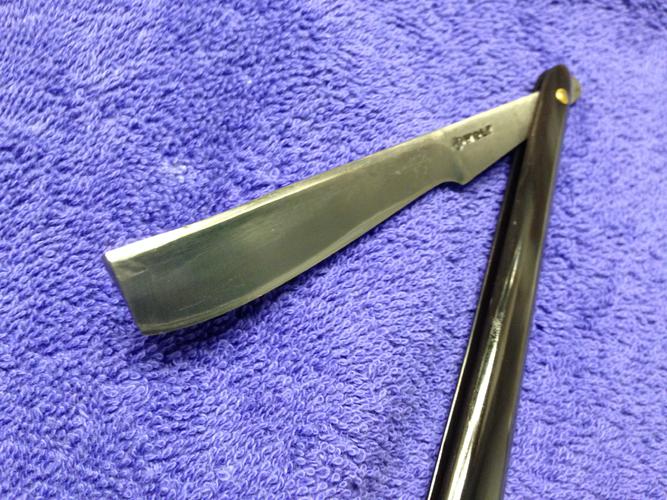 Yes but some knives filet for example are made exactly that way on purpose. Also does not explain how two razors made by the same maker at around the same time that spent lots of time on two separate continents(that are rare also) ended up with what looks like the exact same dimensions and hone wear? Why also does the one I just bought have the tooth below the tang which is clearly defined tang. So this one if it was worn down that way wwould've had the blade below the tang? Also I have seen others from this maker that looked almost identical in shape. Which is an odd shape.
Yes but some knives filet for example are made exactly that way on purpose. Also does not explain how two razors made by the same maker at around the same time that spent lots of time on two separate continents(that are rare also) ended up with what looks like the exact same dimensions and hone wear? Why also does the one I just bought have the tooth below the tang which is clearly defined tang. So this one if it was worn down that way wwould've had the blade below the tang? Also I have seen others from this maker that looked almost identical in shape. Which is an odd shape.
Last edited by rideon66; 01-20-2016 at 03:11 AM.
-
01-20-2016, 03:45 AM #13

When you start talking "rare" etc. you start loosing my interest. What does the continent involved have to do with the issue?
Check out this thread of a very common cheap razor, especially post #6.
http://straightrazorpalace.com/honin...ld-dollar.html
-
01-20-2016, 04:05 AM #14Senior Member

- Join Date
- Jan 2015
- Location
- Apex NC
- Posts
- 535
Thanked: 90
Sorry I just mean there aren't many around. I got this one from Finland. The other one is from the US. Both started out in England. My point was the chance it was treated the same and honed and stropped the same for 200 years giving you the same result was like winning 1.6b in the powerball. I guess it is possible but seems unlikely to me. Now if they were made like that and were not over used they would look similar. Plus it looks to me like an early evolution stage.
-
01-20-2016, 07:37 AM #15

My theory is that most of the reason for the shape (with pasted strops being a contributing factor) was just years and years of regrinding and use. Later razors, when reground, just decrease in size - the tang stays the same, but the blade shrinks a little. Here, the tang is level with the edge so any decrease in the blade width becomes apparent.
Here are examples of the extreme wear discussed:
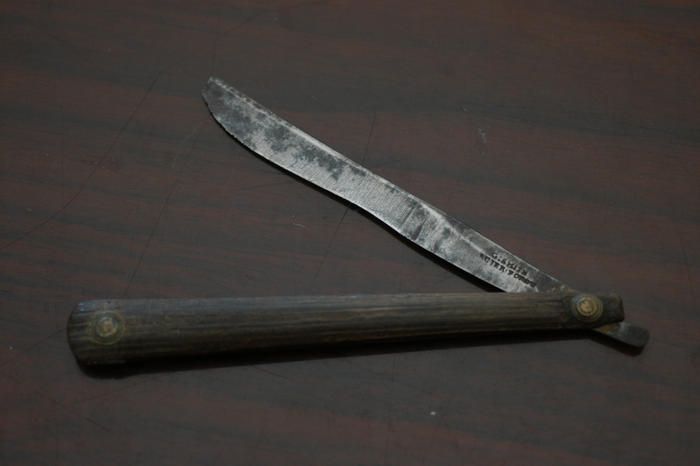
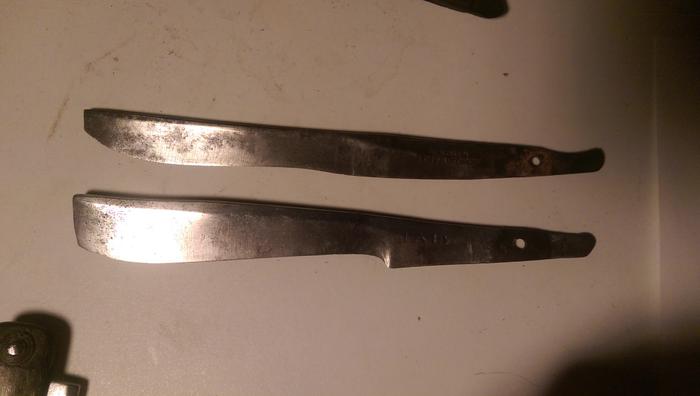
A few with less wear, but the same shaping:
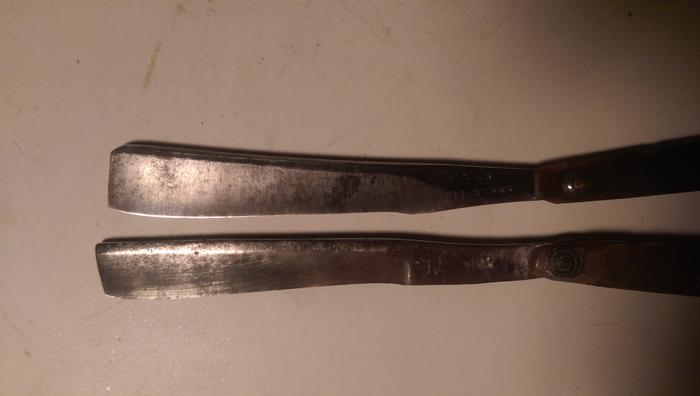
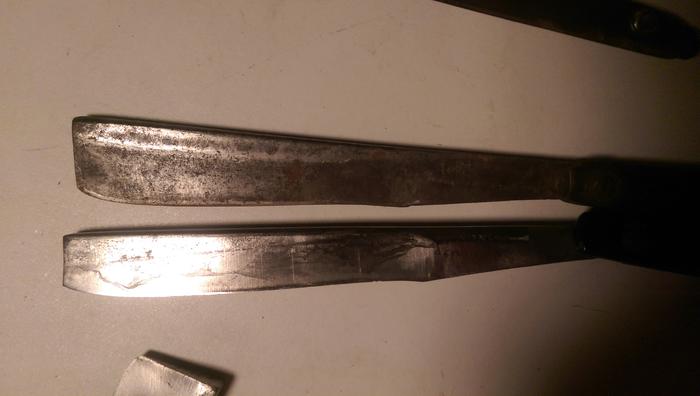
Here are two that are essentially untouched:
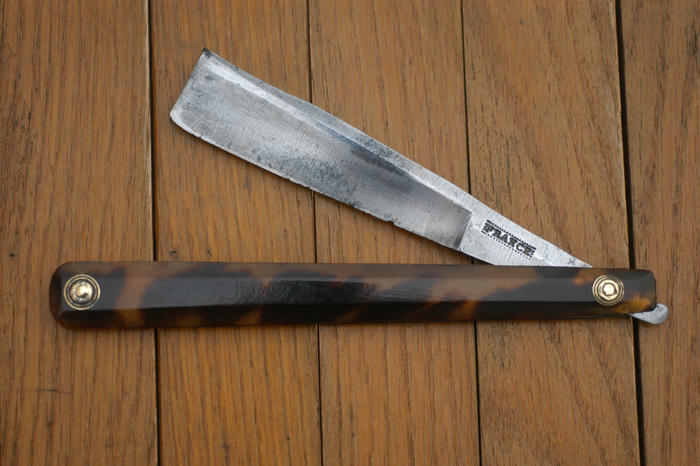

From Perret's book:
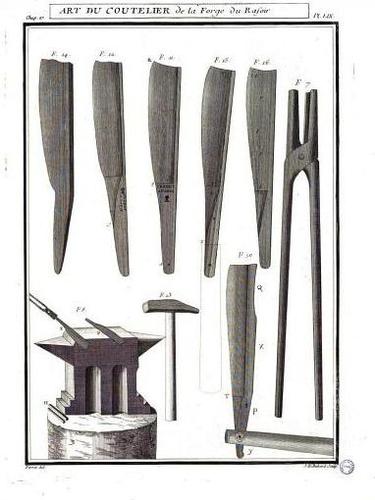
One thing to note is that the tang lines are nice and sharp on these, whereas most I have seen that have the spike at the heel have blurred or softened lines there due to regrinding. Due to the geometry, I think that a lot of these may have been honed a bit toe-favored, supported by this John Shepherd - note the bevel sizes:
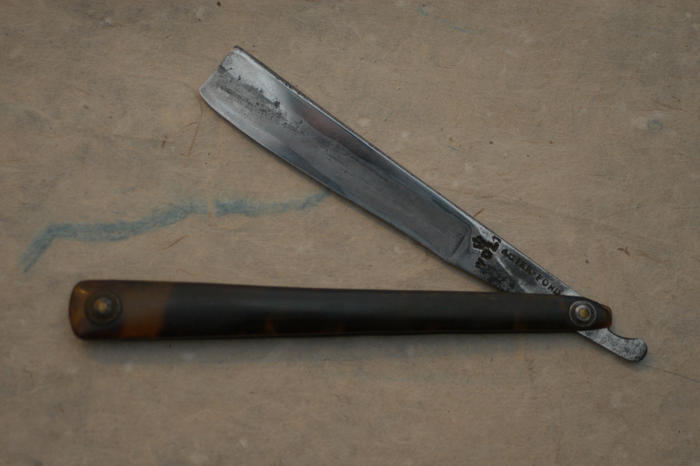
This causes a creeping over time of the part that gets honed toward the toe due to what sits flat on the hone. I'd wager that then when they went to regrind, they often didn't grind the tang and just hit the blade. There are some pieces where it's possible (due to the change in angle of the bottom of the tang) that this was sometimes corrected for:
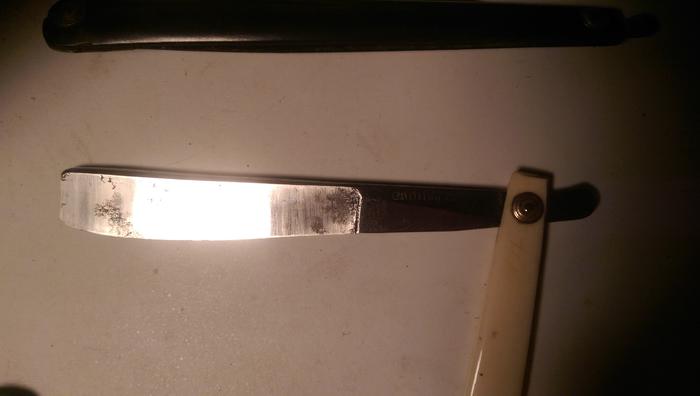
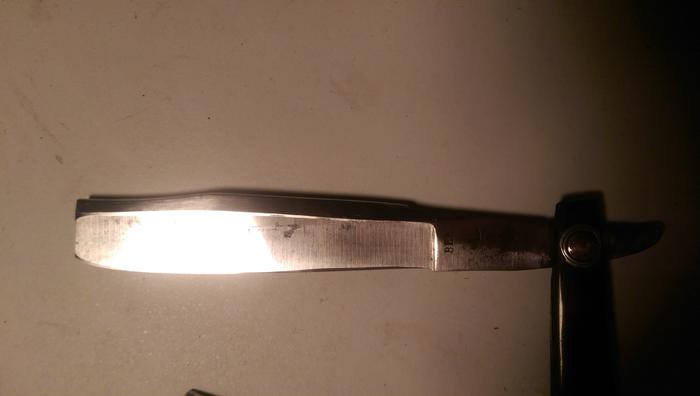
-
The Following 4 Users Say Thank You to ScienceGuy For This Useful Post:
32t (01-20-2016), engine46 (08-19-2016), Slawman (08-19-2016), Voidmonster (01-20-2016)
-
01-20-2016, 01:25 PM #16Senior Member

- Join Date
- Jan 2015
- Location
- Apex NC
- Posts
- 535
Thanked: 90
I do see your point and am in no way saying I am correct here. I just found it very odd that mine and the one I posted are almost exactly the same. Where when I see other makers worn down it is not that close in shape and the wedge and spine are not that intact. I would think to get that close you would have to have the same person honing it, because everyone would have a different technique and would wear down the razor differently due to there technique.
-
01-20-2016, 05:53 PM #17

Working our way back to the original form from the present state of razors 200+ years old is a sketchy way of figuring out what they looked like originally. There are many different ways these razors can be modified, and likely were modified over that long a span, especially if they were in use at all.
For the moment, I'll leave aside the popularity of the padded, pasted strop in the late 1700's and early 1800's because I can't turn up the specific quotes I have in mind.
Our very best source of information about the shape of these razors when they were manufactured is illustrations of razors in use from the era.
I've found a few:
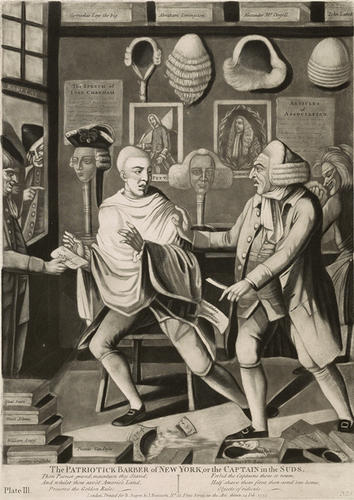
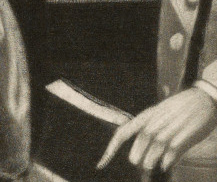
The Patriotic Barber of New York 1775, By Phillip Dawe
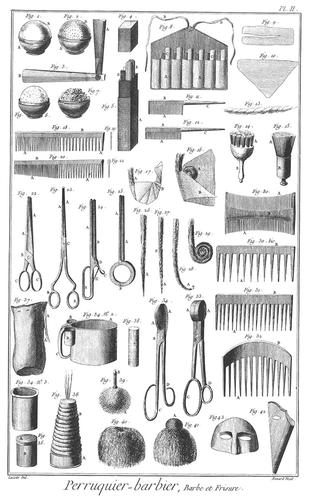
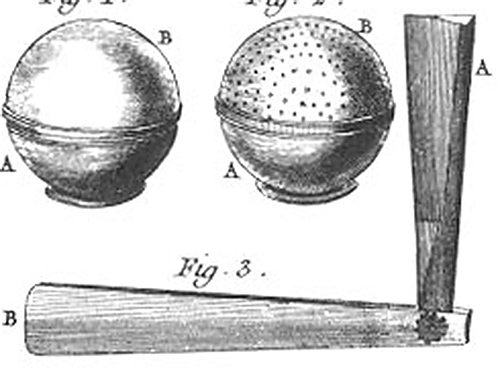
“Perruquier-barbier, barbe et frisure.” Plate from Digest, of science, liberal arts, and the mechanic arts, with their explanation. Seventh or eighth volume. Paris, 1771
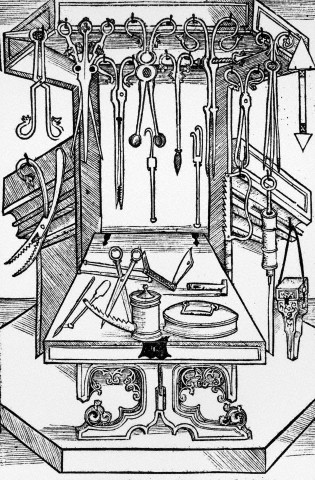
Barber Tools of the Renaissance Unknown source or date, probably late 1600's.

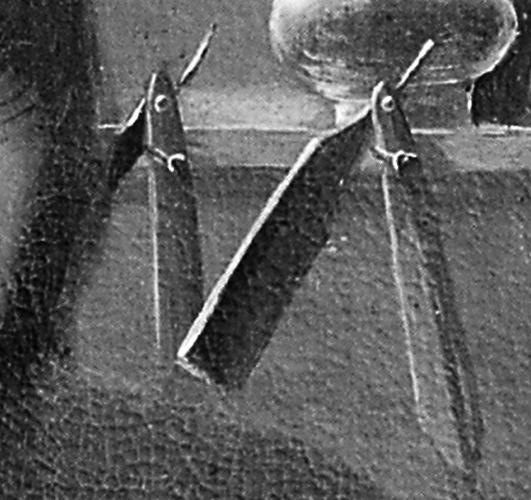
Barber Surgeons Operating on a Boil on a Man's Forehead by Miguel March, sometime between 1645 and 1670.
That's enough to convince me that more likely than not these razors were worn down by honing, grinding, and pasted strops.
Later, when I have time and a workshop, I'll take a junk razor and strop the living daylights out of it on a padded strop with jeweler's rouge and see if I can't replicate the wear pattern.
For now though, I'm pretty certain these razors were not made to have that tooth.Last edited by Voidmonster; 01-20-2016 at 05:55 PM. Reason: Deleted a poor quality version of one image
-Zak Jarvis. Writer. Artist. Bon vivant.
-
The Following 4 Users Say Thank You to Voidmonster For This Useful Post:
32t (01-21-2016), engine46 (08-19-2016), rolodave (01-20-2016), ScienceGuy (01-20-2016)
-
02-06-2016, 06:18 PM #18Senior Member

- Join Date
- Jan 2015
- Location
- Apex NC
- Posts
- 535
Thanked: 90
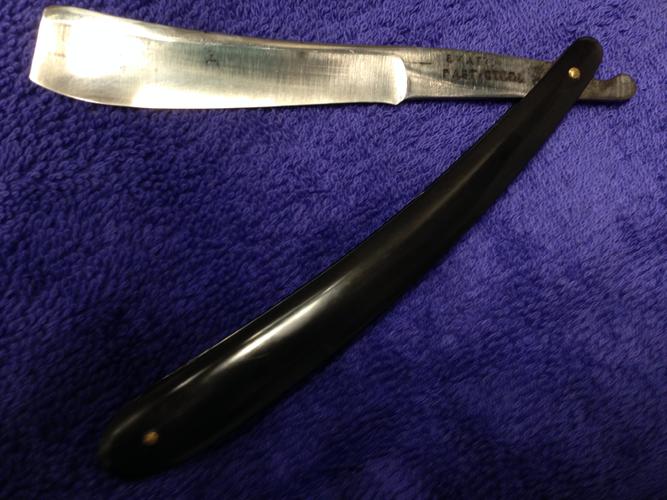
Ok I think this is from stropping on a pasted strop. Smallest bevel I have ever seen and while looking at it could see green paste from long ago till I cleaned it.
-
08-17-2016, 11:26 PM #19

hi i was looking for original wedge type for these razors as i need to make one. do you guys have any picture to see?
-
08-18-2016, 01:51 PM #20Senior Member


- Join Date
- Aug 2014
- Location
- East Central Illinois
- Posts
- 782
Thanked: 101
This thread makes me want to make some razors of this type. What angle are they ground at? I have a a few pieces of very old spring steel I could make them from if I can find it! LOL
Slawman


 45Likes
45Likes LinkBack URL
LinkBack URL About LinkBacks
About LinkBacks







 Reply With Quote
Reply With Quote

